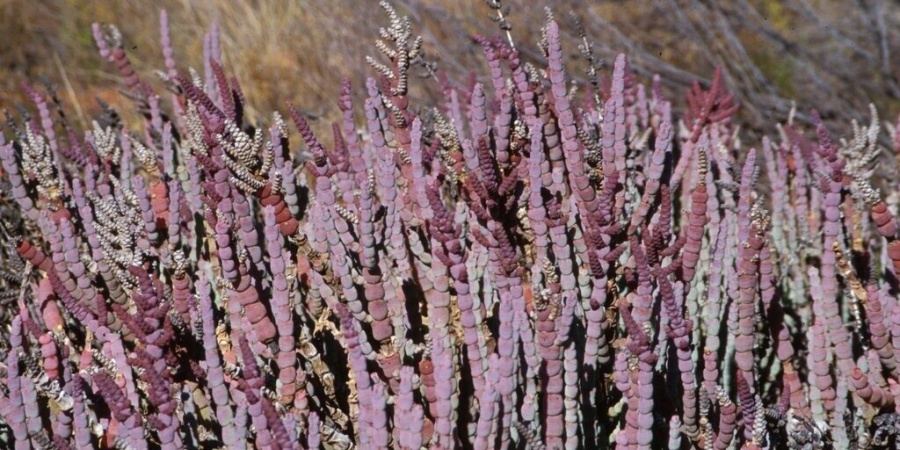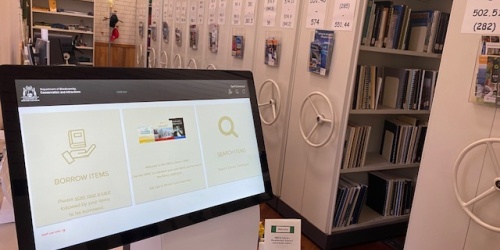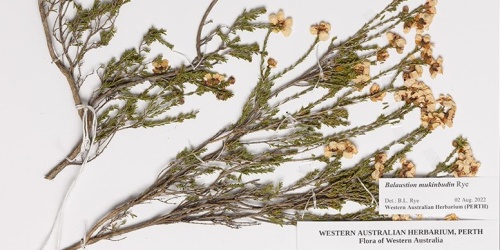
Tetracornia bibenda
This facility was established in 1992 and is located at the Western Australian Conservation Science Centre.
The primary functions of the Threatened Flora Seed Centre are:
- to store seed of Western Australia's conservation significant flora for indefinite periods of time whilst maintaining the highest possible viability of the seed
- to maintain an integrated database on seed provenance and seed biology for each plant species collected
- to make available seed of threatened species for a range of urgent recovery actions.
The seed centre aims to collect and store sufficient genetic resources from each threatened species to ensure its successful reintroduction and establishment in the wild if extinction occurs. Species for collection are prioritised on the basis of threat, and whether they are experiencing a decline in status or health. They are also prioritised by low plant numbers, few populations and limited geographic range and whether they are genetically or taxonomically distinct and endemic (local WA plants).
Seed is a readily accessible and cost effective source of material for research without the need to impact further on wild populations. Seeds can be used to help provide valuable information on reproductive biology, plant genetics, germination requirements and species susceptibility to threatening processes. The seed centre contributes to education and public awareness through tours of the facilities and outreach. Its activities underpin many of the department’s plant recovery programs.
The centre currently houses more than 5,000 collections. All seed is sourced from the wild and fully documented. Appropriate national guidelines that conform to international standards are used for the collection and storage of all seed. Seeds are harvested from a broad range of plants at the point of maturity. Good quality, ripe seed with a broad genetic base is of greater value for threatened species reintroduction, than a handful of seed from one or two plants. Collections are made on a population basis where possible to capture the genetic diversity across a species’ geographic distribution. Seeds are dried under controlled conditions, processed, quantified, samples tested for their ability to germinate and collections stored under sub-zero conditions in laminated foil bags. A portion of the collection is duplicated in another seed bank (usually the Royal Botanic Gardens, Kew, UK seedbank) as a risk management strategy.
The centre also conducts research into the dormancy breaking and germination characteristics of the collections, including investigations into the impact of changing temperature and moisture conditions on seed survival.
The Threatened Flora Seed Centre is a partner in national ( Australian Seed Bank Partnership) and international (Millennium Seed Bank Project) seed conservation projects that contribute towards meeting Australia's obligations to the Global Strategy for Plant Conservation.Since 1992 the Threatened Flora Seed Centre has made significant progress towards the ex-situ seed storage of the State's rare and threatened flora, with seeds from more than 75% of the flora held in storage and more than 20% of the Priority species represented by at least one population. The centre stores seeds from the endangered Banksia Woodlands of the Swan Coastal Plain ecological community for restoration activities.
Related resources
Germination data for collections from the Threatened Flora Seed Centre stored up to 11 years was examined for viability decline.
Overview of seed conservation, and how it supports the survival of plant diversity in WA.
Contact
Email the Threatened Flora Seed Centre

